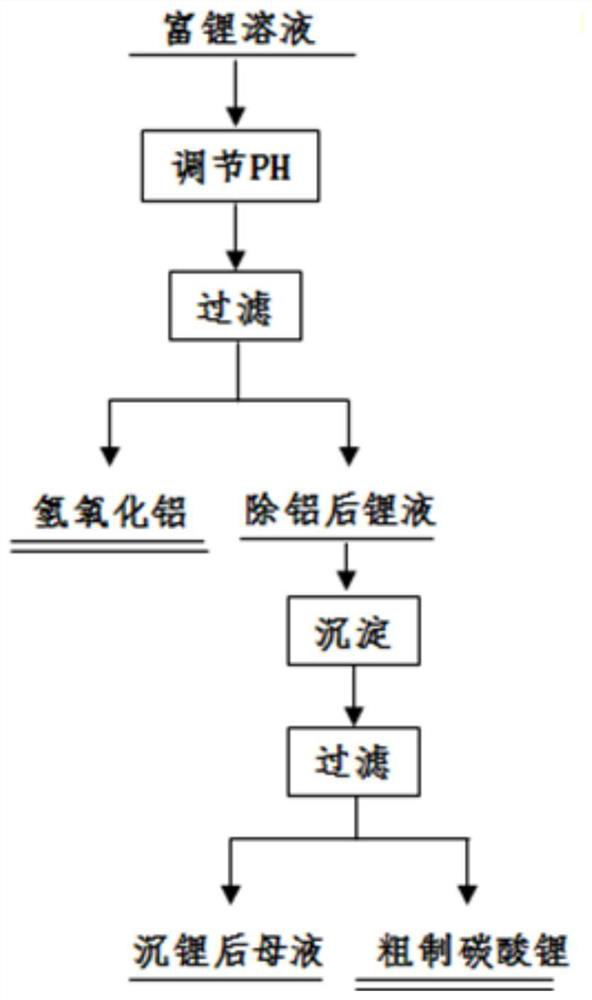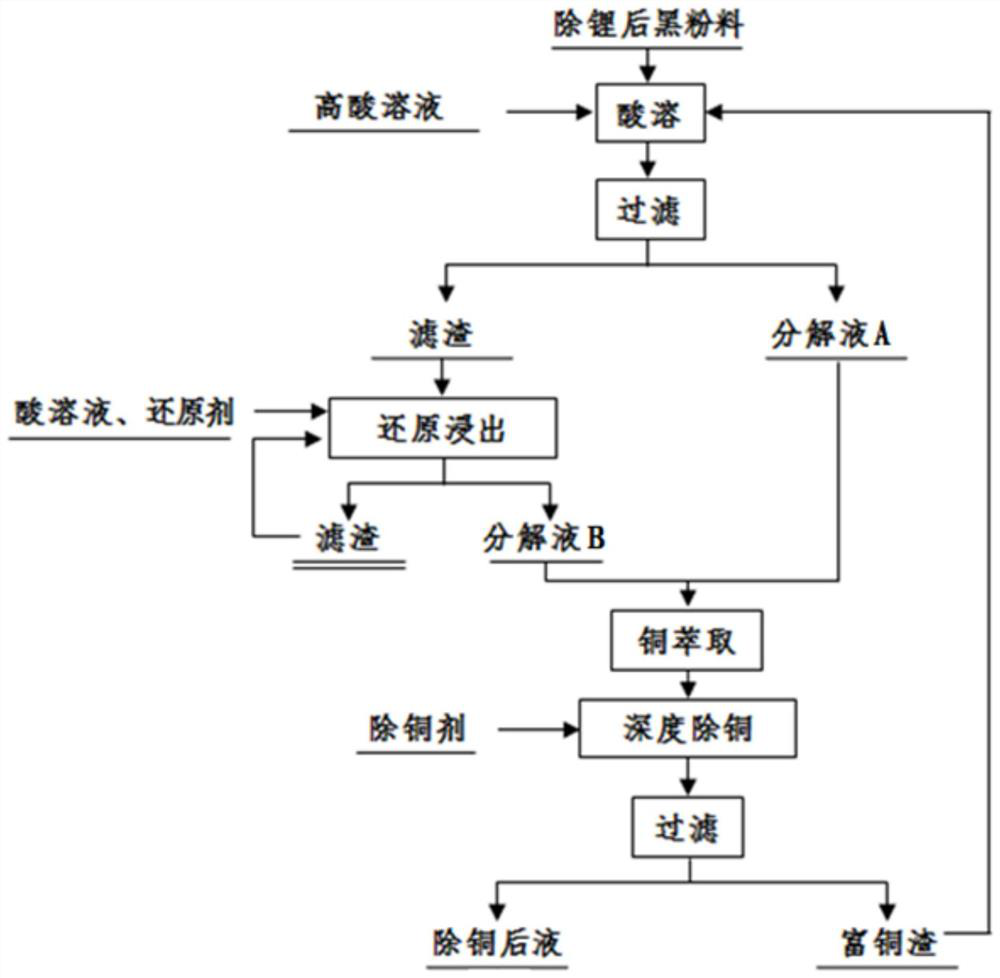Lithium battery waste recycling method and application thereof
A lithium battery and waste technology, applied in the field of lithium battery waste recycling, can solve problems such as high requirements and increased cost
- Summary
- Abstract
- Description
- Claims
- Application Information
AI Technical Summary
Problems solved by technology
Method used
Image
Examples
Embodiment 1
[0112] Such as Figure 1~4 Shown: figure 1 It is a schematic diagram of the technological process of performing multi-stage countercurrent washing on the reduced and calcined battery waste to obtain the lithium-rich solution and the black powder after lithium removal in this embodiment; figure 2 The schematic diagram of the technological process that the present embodiment utilizes the lithium-rich solution to reclaim aluminum hydroxide and crude lithium carbonate; image 3 It is a schematic diagram of the technological process of sequentially performing acid leaching, reduction leaching and copper ion removal on the black powder after lithium removal in this embodiment; Figure 4 It is a schematic diagram of the process flow for magnesium removal and cobalt-nickel-manganese mixed salt crystallization in this embodiment.
[0113] A method for recycling lithium battery waste, said method comprising the following steps:
[0114] (1) After the lithium battery waste is obtaine...
Embodiment 2
[0141] A method for recycling lithium battery waste, said method comprising the following steps:
[0142] (1) After the lithium battery waste is obtained, it is discharged and crushed into particles with a particle size of 180 μm; then hydrogen or natural gas is introduced at 700 ° C for reduction and calcination for 6 hours, and the ventilation rate is 5 m 3 / h. After calcining, the material is crushed and sieved to obtain particles with a particle size of 120 μm;
[0143] Using the countercurrent washing method to carry out multi-stage counter-current washing on the battery waste after the reduction and calcination treatment, using 4-stage washing, the initial solution is a weakly acidic pH=6 sulfuric acid solution, and the end point is pH=10 after multi-stage washing. The solid-to-liquid ratio is controlled by the pH value to 1:3 (the aqueous solutions at all levels are set to reflux to prevent the high impurity content caused by pH fluctuations). The leaching rate of lit...
Embodiment 3
[0169] A method for recycling lithium battery waste, said method comprising the following steps:
[0170] (1) After the lithium battery waste is obtained, it is discharged and crushed into particles with a particle size of 180 μm; then hydrogen or natural gas is introduced at 500°C for reduction and calcination for 4 hours, and the ventilation rate is 15m 3 / h. After calcining, the material is crushed and sieved to obtain particles with a particle size of 150 μm;
[0171] Using the countercurrent washing method to carry out multi-stage counter-current washing on the battery waste after the reduction and calcination treatment, using 4-stage washing, the initial solution is a weakly acidic pH=8 sulfuric acid solution, and the end point is pH=12 after multi-stage washing. The solid-to-liquid ratio is controlled by the pH value to 1:5 (the aqueous solutions at all levels are set to reflux to prevent the high impurity content caused by pH fluctuations). The leaching rate of lithi...
PUM
| Property | Measurement | Unit |
|---|---|---|
| particle diameter | aaaaa | aaaaa |
| particle size | aaaaa | aaaaa |
| particle size | aaaaa | aaaaa |
Abstract
Description
Claims
Application Information
 Login to View More
Login to View More - Generate Ideas
- Intellectual Property
- Life Sciences
- Materials
- Tech Scout
- Unparalleled Data Quality
- Higher Quality Content
- 60% Fewer Hallucinations
Browse by: Latest US Patents, China's latest patents, Technical Efficacy Thesaurus, Application Domain, Technology Topic, Popular Technical Reports.
© 2025 PatSnap. All rights reserved.Legal|Privacy policy|Modern Slavery Act Transparency Statement|Sitemap|About US| Contact US: help@patsnap.com



